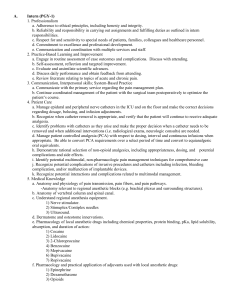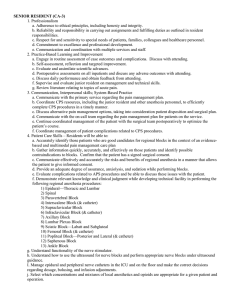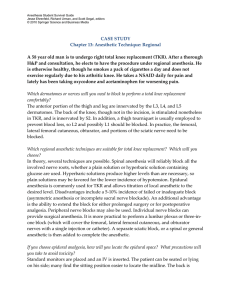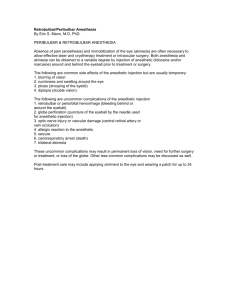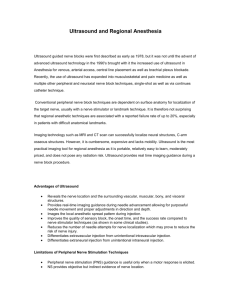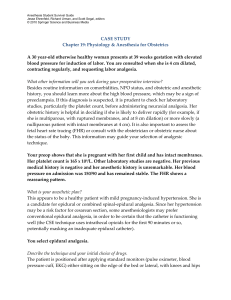JUNIOR RESIDENT (CA-1/CA-2) 1. Professionalism
advertisement
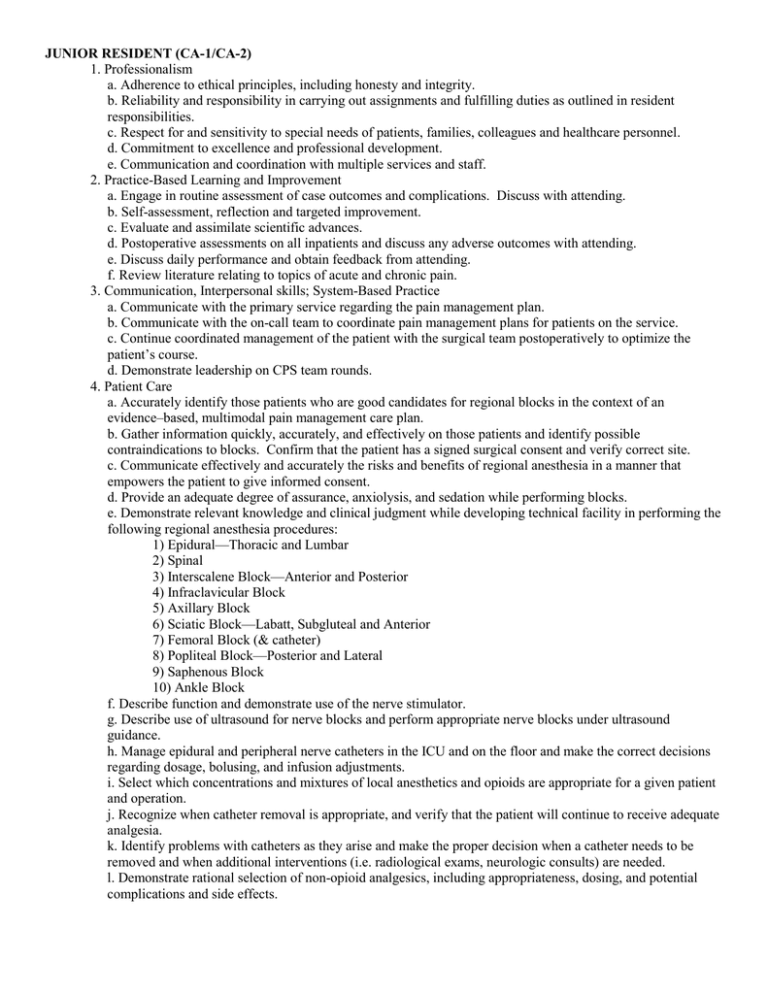
JUNIOR RESIDENT (CA-1/CA-2) 1. Professionalism a. Adherence to ethical principles, including honesty and integrity. b. Reliability and responsibility in carrying out assignments and fulfilling duties as outlined in resident responsibilities. c. Respect for and sensitivity to special needs of patients, families, colleagues and healthcare personnel. d. Commitment to excellence and professional development. e. Communication and coordination with multiple services and staff. 2. Practice-Based Learning and Improvement a. Engage in routine assessment of case outcomes and complications. Discuss with attending. b. Self-assessment, reflection and targeted improvement. c. Evaluate and assimilate scientific advances. d. Postoperative assessments on all inpatients and discuss any adverse outcomes with attending. e. Discuss daily performance and obtain feedback from attending. f. Review literature relating to topics of acute and chronic pain. 3. Communication, Interpersonal skills; System-Based Practice a. Communicate with the primary service regarding the pain management plan. b. Communicate with the on-call team to coordinate pain management plans for patients on the service. c. Continue coordinated management of the patient with the surgical team postoperatively to optimize the patient’s course. d. Demonstrate leadership on CPS team rounds. 4. Patient Care a. Accurately identify those patients who are good candidates for regional blocks in the context of an evidence–based, multimodal pain management care plan. b. Gather information quickly, accurately, and effectively on those patients and identify possible contraindications to blocks. Confirm that the patient has a signed surgical consent and verify correct site. c. Communicate effectively and accurately the risks and benefits of regional anesthesia in a manner that empowers the patient to give informed consent. d. Provide an adequate degree of assurance, anxiolysis, and sedation while performing blocks. e. Demonstrate relevant knowledge and clinical judgment while developing technical facility in performing the following regional anesthesia procedures: 1) Epidural—Thoracic and Lumbar 2) Spinal 3) Interscalene Block—Anterior and Posterior 4) Infraclavicular Block 5) Axillary Block 6) Sciatic Block—Labatt, Subgluteal and Anterior 7) Femoral Block (& catheter) 8) Popliteal Block—Posterior and Lateral 9) Saphenous Block 10) Ankle Block f. Describe function and demonstrate use of the nerve stimulator. g. Describe use of ultrasound for nerve blocks and perform appropriate nerve blocks under ultrasound guidance. h. Manage epidural and peripheral nerve catheters in the ICU and on the floor and make the correct decisions regarding dosage, bolusing, and infusion adjustments. i. Select which concentrations and mixtures of local anesthetics and opioids are appropriate for a given patient and operation. j. Recognize when catheter removal is appropriate, and verify that the patient will continue to receive adequate analgesia. k. Identify problems with catheters as they arise and make the proper decision when a catheter needs to be removed and when additional interventions (i.e. radiological exams, neurologic consults) are needed. l. Demonstrate rational selection of non-opioid analgesics, including appropriateness, dosing, and potential complications and side effects. m. Identify appropriate candidates for more invasive interventions including tunneled epidural and intrathecal catheters, continuous infusions, intrathecal drug-delivery systems, and sympathetic neurolytic blocks, especially in the cancer pain population. n. Recognize potential complications of invasive procedures and catheters including infection, bleeding complication, and/or malfunction of implantable devices. o. Apply knowledge of non-pharmacologic techniques to a comprehensive care plan for the patient in pain 5. Medical Knowledge a. Anatomy and physiology of pain transmission, pain fibers, and pain pathways. b. Anatomy relevant to regional anesthetic blocks (e.g. brachial plexus and surrounding structures). c. Anatomy of vertebral column and spinal canal. d. Understand regional anesthesia equipment. 1) Nerve stimulator. 2) Stimuplex/Contiplex needles 3) Ultrasound. e. Dermatome and osteotome innervations. f. Pharmacology of local anesthetic drugs including chemical properties, protein binding, pKa, lipid solubility, absorption, and duration of action: 1) Cocaine 2) Lidocaine 3) Procaine 4) 2-Chloroprocaine 5) Tetracaine 6) Benzocaine 7) Mepivacaine 8) Prilocaine 9) Bupivacaine 10) Ropivacaine g. Pharmacology and practical application of adjuvants used with local anesthetic drugs: 1) Epinephrine 2) Dexamethasone 3) Opioids 4) Clonidine 5) Sodium bicarbonate h. Factors associated with systemic toxicity: 1) Site of injection 2) Drug selection 3) Dose 4) Speed of injection 5) Vasoconstrictors 6) Co-existing diseases i. Understand the technical aspects of ultrasound regional anesthesia and the limitations of ultrasound. j. Management of complications associated with regional anesthetic techniques: 1) Local anesthetic toxicity 2) Seizures 3) Hematoma 4) Total spinal 5) Postdural puncture headache 6) Spinal/epidural hematoma or abscess 7) Cauda equina syndrome 8) Pneumothorax 9) Nerve injury/paresis 10) Failed block 11) “Expected” complications, such as i. Phrenic nerve paralysis ii. Horner’s syndrome iii. Hoarseness k. Pharmacology and practical application of commonly used opioids including onset of action, metabolism and active metabolites, elimination, general and unique side effects for the following: 1) Morphine 2) Meperidine 3) Oxycodone 4) Hydromorphone 5) Fentanyl 6) Methadone l. Demonstrate safe and effective patient controlled analgesia settings for the following opioids: 1) Morphine 2) Hydromorphone 3) Fentanyl m. Conversion of intravenous opioids to oral equivalents. n. Pharmacology and practical application of commonly used non-opioids for analgesia including onset of action, metabolism and active metabolites, elimination, general and unique side effects for the following classes of medication: 1) NSAIDS 2) Cox-2 Inhibitors 3) Acetaminophen 4) Gabapentanoids (Calcium Channel Blockers) 5) Sodium Channel Blockers 6) NMDA antagonist 7) Alpha-2 agonists o. Safe and effective dosing and use of opioids, local anesthetics, clonidine and combined solutions for both lumbar and thoracic epidurals. p. Safe and effective use, indications, and complications of continuous infusions of ketamine, dexmedetomidine and lidocaine. q. Utilization of history and physical exam integrated with risk assessment to develop multimodal treatment plans for the hospitalized patient in pain
